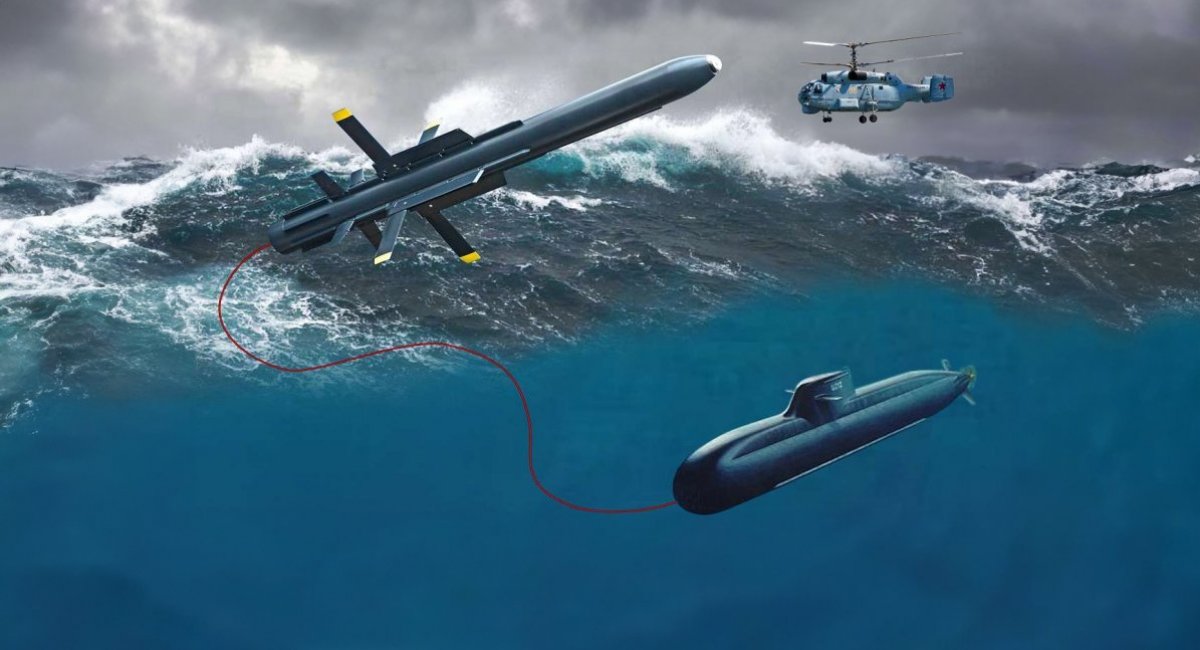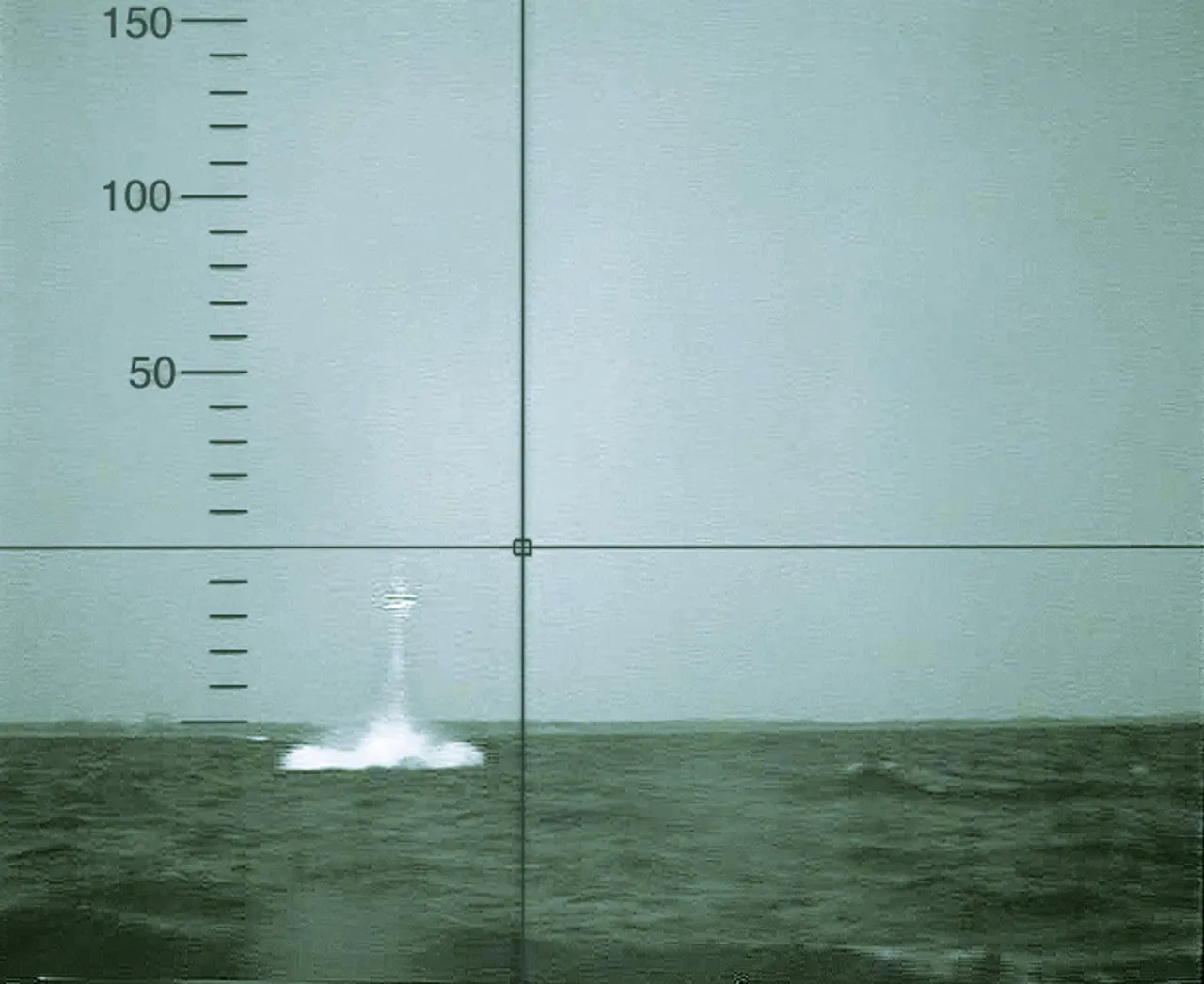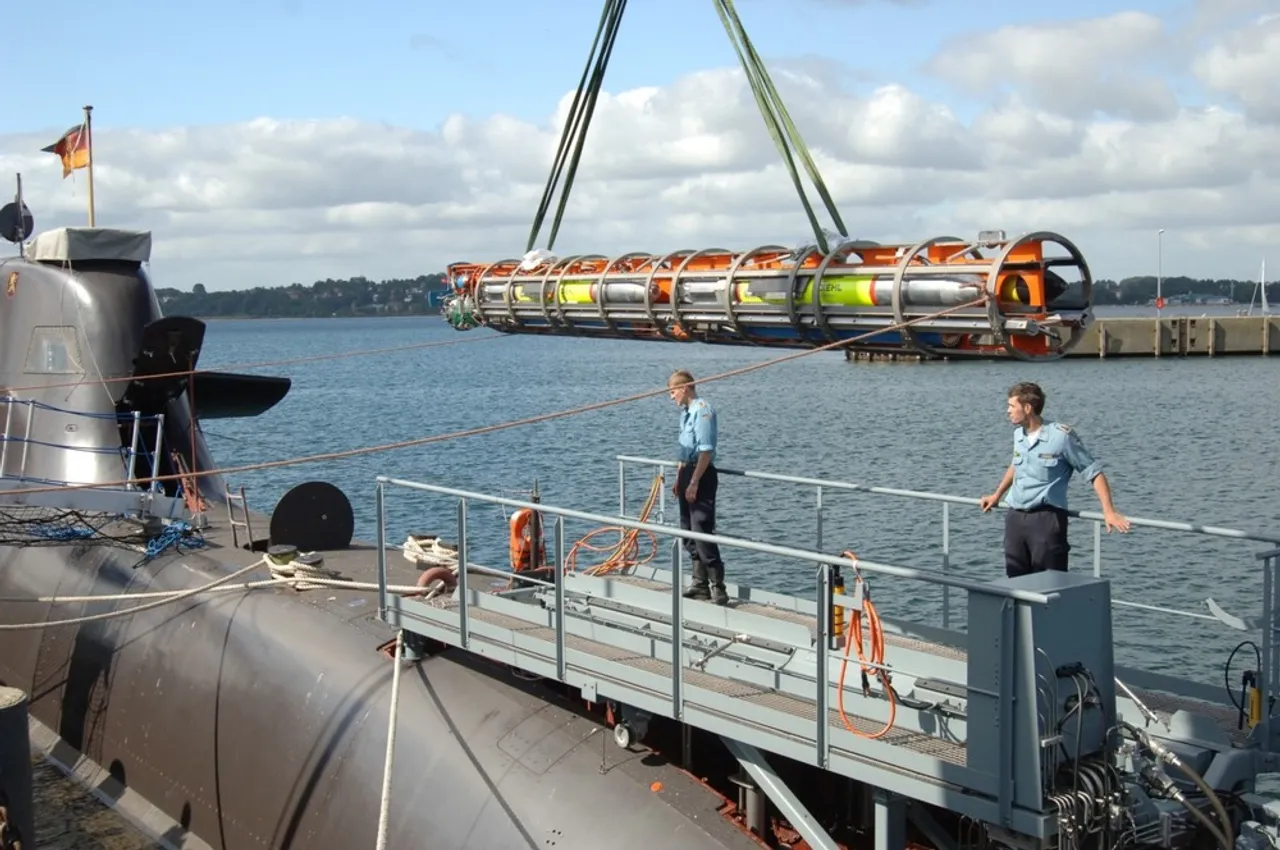The risk that China may rapidly build up its Type 093 and 095 SSN and Type 094 and 096 SSBN numbers needs to be accounted for by a stepped up US Virginia SSN construction insurance policy. Within the risk equation is also high quality Russian Yasen SSNs and Borei/Borey SSBNs (also see). During the First Cold War a rolling average of up to 20 UK SSNs (augmented by UK SSKs) used to assist in countering the Russian threat. But in this Second Cold War there is a rolling average of 7 UK SSNs. Unfortunately the planned part solution of Australian AUKUS Virginias in the 2030s is receding as a possibility due to the shortfall in US Virginia production.
Below, the US Department of Defense (DoD) predicts "modest" growth
in Chinese submarine numbers through to 2035. This is even though China has demonstrated a surprising ability to rapidly construct vessels of all types - including submarines.
I therefore suspect this modest growth prediction may be partly for US political reasons. That is the US DoD is predicting low Chinese production to match the US's own clearly identified slow pace of Virginia SSN production. It now appears Columbia SSBN construction (with priority over Virginia production and competing in shipyard construction with Virginias) is behind schedule.
An
implication for Australia is slow pace in US SSN production may mean no US SSNs
under AUKUS for Australia during the 2030s. This is because the USN may need all the SSNs it can get to face any risk of substantial growth in Chinese SSN, SSBN and SSK numbers.
On December 18, 2024 the US Department of Defense
(DoD) published the Military and Security Developments Involving
the People’s Republic of China: Annual Report to Congress better known
as the China
Military Power Report. It is at https://media.defense.gov/2024/Dec/18/2003615520/-1/-1/0/MILITARY-AND-SECURITY-DEVELOPMENTS-INVOLVING-THE-PEOPLES-REPUBLIC-OF-CHINA-2024.PDF
In this first article I will record
what the 2024 China Military Power Report says about Chinese submarines. I've also added hyperlinks from Wikipedia partly because the don't suffer "link rot" in the longer term:
Page 48 – [2] Key Takeaways
[1] The [People’s
Liberation Army Navy] PLAN is largely composed of modern multi-mission
ships and submarines…
[and 2] In the near term, the PLAN will have the ability
to conduct long-range precision strikes against land targets from its submarine
and surface combatants using land-attack cruise missiles (LACMs),
notably enhancing the PRC’s power projection capability.
Page 52 – Service Capabilities and Modernization. The PLAN has highly prioritized
modernizing its submarine force but its force structure continues to grow
modestly as it matures its force, integrates new technologies, and expands its
shipyards. The PLAN operates six nuclear-powered ballistic missile submarines
(SSBN), six nuclear-powered attack submarines (SSN), and 48 diesel powered/air-independent
powered attack submarines (SS). Despite the ongoing retirement of older hulls,
the PLAN’s submarine force is expected to grow to 65 units by 2025 and 80 units
by 2035 due to an expansion of submarine construction capacity. The PRC
continues to increase its inventory of conventional submarines capable of
firing advanced ASCMs. Between the mid-1990s and mid-2000s, the PLAN
purchased 12 Russian-built KILO
Page 53 -
class SS units, eight of which can launch ASCMs. PRC shipyards have
delivered 13 SONG class SS units (Type 039) and 21 YUAN class diesel-electricair-independent propulsion attack submarines (SSP) (Type 039A/B). The PRC is
expected to produce 25 or more YUAN class submarines by 2025. In late 2021, the
PLAN retired the first two KILO class 877EKM submarines (both non-ASCM capable)
purchased from Russia in the 1990s.
Over the past 15 years, the PLAN has constructed 12 nuclear-powered
submarines—two SHANG I class SSNs (Type 093), four SHANG II class SSNs (Type 093A), and six JIN class SSBNs (Type 094). Equipped with the CSS-N-14 (JL-2)
submarine-launched ballistic missile (SLBM) (3,900 nm) or the CSS-N-20 (JL-3)
SLBM (5,400 nm), the PLAN’s six operational JIN class SSBNs represent the PRC’s
first credible sea-based nuclear deterrent. Each JIN class SSBN can carry up to
12 missiles. In 2019, Beijing displayed these missiles at the PRC’s 70th
founding anniversary parade. The PRC’s next-generation Type 096 SSBN will
reportedly be armed with follow-on longer range SLBM [a later JL-3 variant or a
JL-4?]. The Type 096 will likely begin construction soon. Considering
the projected 30-plus-year service life of the platforms, the PRC will operate
its JIN and Type 096 SSBN fleets concurrently in the 2030s. This would align
with Xi’s 2018 directive for the SSBN force to achieve “stronger growth.”
The PRC launched four SHANG III class (Type 093B) guided-missile
nuclear-powered attack submarines (SSGN) between May 2022 and January 2023 and
could have three hulls of this class operational by 2025. This new SHANG class
variant enhances the PLAN’s anti-surface warfare capability and could provide a
clandestine land-attack option if equipped with LACMs.
Page 54 –
Eight of the PLAN’s 12 KILO class SSs are equipped with the Russian built
SS-N-27b [Kalibr] ASCM (120 nm). The PRC’s SONG-class SS, YUAN class SSP, and SHANG
class SSN field the PLAN’s newest domestic submarine-launched ASCM, the YJ18,
which constitutes an improvement over the SS-N-27b ASCM.
…The PLAN recognizes that long-range [Anti-Ship Cruise Missiles] ASCMs
require a robust, over-the-horizon (OTH) targeting capability to reach their
full potential. To fill this capability gap, the PLA is investing in joint
reconnaissance, surveillance, command, control, and communications systems at
the strategic, operational, and tactical levels for high-fidelity targeting
information for surface and subsurface launch platforms.
…In the coming years, the PLAN will probably field [Land Attack Cruise
Missiles] LACMs on its newer cruisers and destroyers and the
developmental SHANG III
SSGN [the Type 093B]. The PLAN could retrofit its older
surface combatants and submarines with land-attack capabilities. The
addition of land-attack capabilities to the PLAN’s surface combatants and submarines
would provide the PLA with flexible long-range strike options, enabling the PRC
to hold land targets at risk beyond the Indo-Pacific region.
Page 56 – For the PLAN and CCP, the
possession of SSBNs has long been an important symbol of achieving great power
status. The PRC has six operational Type 094 JIN-class SSBNs. These submarines
are conducting at sea deterrent patrols. The PLAN’s JIN SSBNs are equipped to
carry up to 12 SLBMs, JL-2 (CSS-N-14) and JL-3 (CSS-N-20), representing the
PRC’s first viable sea-based nuclear deterrent. With six operational SSBNs, the
PLAN has the capacity to maintain a constant at sea deterrent presence. With a
range of approximately 3,900 nm, a JIN equipped with the JL-2 would have to
operate in the mid-Pacific Ocean to threaten targets in the western half of the
continental United States (CONUS) (as well as Hawaii and Alaska) or east of
Hawaii to threaten targets on the East Coast of the United States. PRC sources
claim the JL-3 has a range of over 5,400 nm, which would allow a JIN armed with
this missile to target portions of CONUS from [Bastion defended] PRC littoral waters. The PLAN’s
next generation SSBN, the Type 096, is expected to enter service the late 2020s
or early 2030s. Considering the 30-plus-year service life of the PRC’s first generation
SSNs, the PRC will operate the Type 094 and Type 096 SSBNs concurrently.
…The PLAN’s submarine fleet is similarly positioned
to maintain high readiness, with an increasing focus on real-world contingency
training further from shore for longer periods of
Page 57 –
time. This operationally aligned training is part of regular patrols, in
line with expanding maritime domain requirements to operate proficiently in
near and far seas. The submarine force is aspiring toward a capability for
integrated operations to enable more dynamic tasking and response to support
force modernization goals.
Page 83 - PLA CAPABILITIES IN DEVELOPMENT
Key Takeaways
• The PLA is aggressively developing capabilities to provide options for the
PRC to dissuade, deter, or, if ordered, defeat third-party intervention in
the Asia-Pacific region.
• The PLA continues developing the capabilities to conduct military
operations deeper into the Indo-Pacific region and globally.
• The PLA has undertaken important structural reforms and introduced new
military doctrine to strengthen joint operations and is testing joint
capabilities in and beyond the FIC [expansion of “FIC” acronym unknown?].
Page 84 -
The PLA’s [Anti-access/area denial] A2AD - also known as counter
intervention—capabilities are the most robust in the FIC although the PLA is
increasingly able to project power into the Philippine Sea and the PRC seeks to
strengthen its capabilities to reach farther into the Pacific Ocean.
… PRC messaging to Indo-Pacific countries probably seeks to cast
the United States and its allies as untrustworthy external actors interfering
with internal affairs, hegemonic regional aggressors, and violators of
international law. Beijing likely uses official government statements,
state-run media, and online disinformation to promote a narrative that
Washington seeks to initiate a new Cold War by pressuring Indo-Pacific
countries to ally with the United States and strategically encircle the PRC.
The PRC’s Indo-Pacific messaging efforts further recast Washington’s regional
engagements and partnerships, including the Quad and AUKUS, as hegemonic efforts to effectuate bloc-based regional
confrontation and undermine regional stability… Earlier in 2023, PRC official statements and state
media sought to inaccurately characterize the AUKUS partnership as a hegemonic nuclear-powered submarine cooperation
agreement that undermined the international nuclear non-proliferation regime
and the stability of the Indo-Pacific region.
Page 88 -
In the “Deep Sea” domain, the PLAN would use submarines - including conventional
and nuclear armed - to achieve deterrence while being able to strike the enemy’s
surface and shore targets, strike and destroy enemy submarines, and destroy the
enemy’s maritime lines of communication. To this end, submarine-launched
variants of the YJ-18 anti-ship missile are likely installed on the
nuclear-powered SHANG SSN as well as the SONG and YUAN class submarines. The
recently launched SHANG III SSGN will further enhance the PLAN’s surface
warfare capability by providing a stealthy, land-attack option if armed with
LACMs.
The PLAN provides a sea-based strategic deterrent
with its SSBNs. The JIN SSBN can carry up to 12 JL-2 SLBMs with a range of
3,900 nm. By the early 2030s, a newer, multiple-warhead [JL-4?] SLBM
with a range of 5,400 nm could be developed for the next generation Type 096
SSBN.
Page 128 - New attack submarines and modern surface combatants
with anti-air capabilities and fourth-generation naval aircraft entering the
force are designed to achieve maritime superiority in the FIC and deter and
counter any potential third-party intervention in a Taiwan conflict
Page 150 - Naval and Shipbuilding Industry. The PRC, the top
commercial ship-producing nation in the world by most industry measures, has
sufficient capacity to produce any required numbers of naval classes:
submarines, surface combatants, and auxiliary and amphibious ships. The PRC
has developed unmanned underwater systems, publicly revealing a
long-range system in 2019.
Page 153 - PRC ARMS EXPORTS As of 2023, the PRC is the
fourth-largest arms supplier in the world and sells nearly every category of
conventional military equipment, including UAVs, MANPADS, submarines,
naval surface vessels, SAM systems, and fighter aircraft to customers
worldwide.
…Naval Combatants. The PRC is a supplier
of major naval vessels, highlighted by Pakistan’s 2015 purchase of eight YUAN
class submarines for more than $3 billion. Thailand purchased one YUAN class
submarine in 2017. In 2024, the PRC accepted Thailand’s proposal to
purchase two offshore patrol vessels or one frigate. As of April 2024, the
PRC had not delivered any Yuan submarines, although it had delivered two MING
class submarines to Bangladesh in 2016 and one to Burma in 2021. In 2017
and 2018, the PRC sold two frigates to Bangladesh and four to Pakistan,
respectively. In September 2019, the PRC made its first-ever sale of a landing
platform dock ship to Thailand. In April 2023, Thailand received a new
frigate to serve as a submarine tender.
Page 165 - TAIWAN STRAIT MILITARY BALANCE, NAVAL FORCES
Totals For
PRC For Taiwan
Attack Submarines (SSK) 47 4
SSNs 6 0
SSBNs 6 0
++++++++++++
Another useful reference is Wikipedia's PLAN Submarine Force which contains a vast number of embedded hyperlinks.





